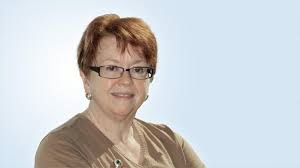Having spent decades promoting innovation in the economy of Canada and its eastern provinces, Jacquelyn Thayer Scott is frustrated that the country is actually regressing compared with its peers.
Scott is the Past President and professor of organization management at Cape Breton University, and will step down this month as the Chair of Innovacorp. And for several years she has been the lone Atlantic Canadian representative on the Science, Technology and Innovation Council, a federal body that monitors Canada’s standing in these fields.
The council just released its biennial report, which assesses innovation in developed countries, and the Canadian results aren’t pretty.
“My main takeaway is we’re still in trouble,” said Scott in an interview to mark the release of the report. “There just hasn’t been a lot of movement, especially in the business sector in the past 15 or 20 years.”
Innovacorp VC Funding Hits $5.9M
The report says business R&D spending as a percentage of GDP dropped by $1 billion between 2007 and 2014. We were 18th in the world in that category in 2006 but fell to 26th in 2013.
The report said Canada has some real “star power” in higher education research with 98 researchers named in the top 1 percent in their fields. But funding for academic research as a percentage of GDP has been stagnant while other countries have increased spending. So Canada’s ranking in higher education spending as a percentage of GDP has fallen from third in 2006 to eighth in 2013.
“Despite ongoing efforts to improve Canada’s lagging business innovation performance, it has continued to deteriorate,” concluded the report. “Canada has fallen further behind its global competitors on key performance indicators, reflected most tellingly in private-sector investment in research and development.”
Scott said Canadian businesses simply have to invest more in R&D and produce more innovative products. She added there is a need for more pro-active incentives for R&D; the largest program for innovation, the Canada Revenue Agency’s Scientific Research and Experimental Development, or SRED, program, rewards companies with tax credits only after they have made an R&D expenditure. Scott said it’s not an effective way to support companies that “have to move quickly or lose.”
Canada, she said, suffers from one of two problems: either commodity price are high and policy-makers feel the economy can thrive without innovation; or the Canadian dollar is weak and the country’s exports rise because we can compete on price.
Both these situations detract from the need to diversify the economy and produce products that can capture a global customer base.
Though the report does not provide provincial or regional breakdowns, Scott said Atlantic Canada is doing better than before though it is hindered by its small corporate sector. The report highlights that startups and small businesses are one of the bright spots in the Canadian innovation landscape, and Scott sees these young companies as one of the strengths on the east coast. The four provinces have to continue to improve their cooperation to ensure it continues to grow.
“It’s a bit of an uphill battle but any lessons we learn in Canada have to be learned even more in Atlantic Canada,” she said. “We really have to have a collaborative, integrated policy and we can’t be fighting among ourselves.”










